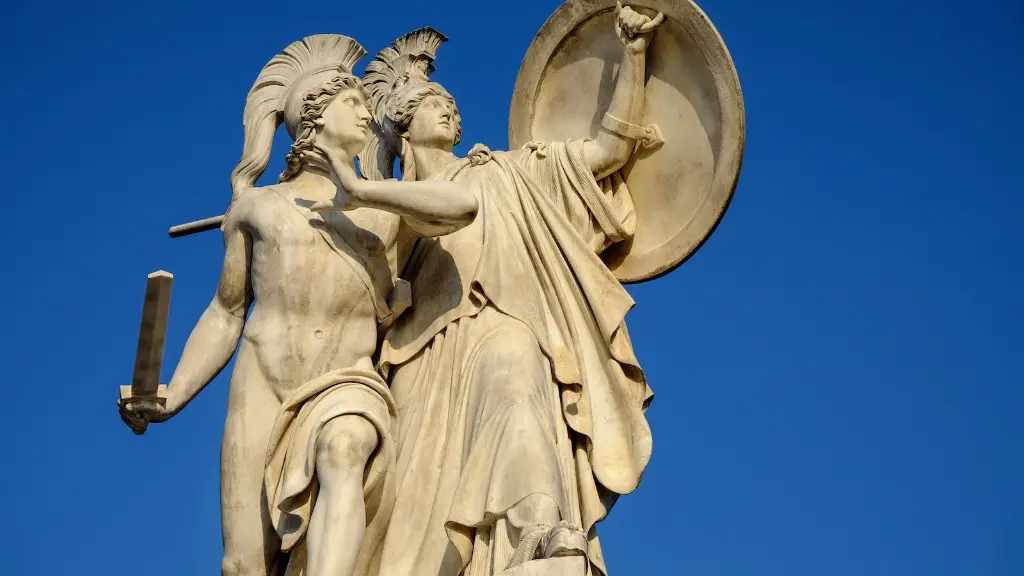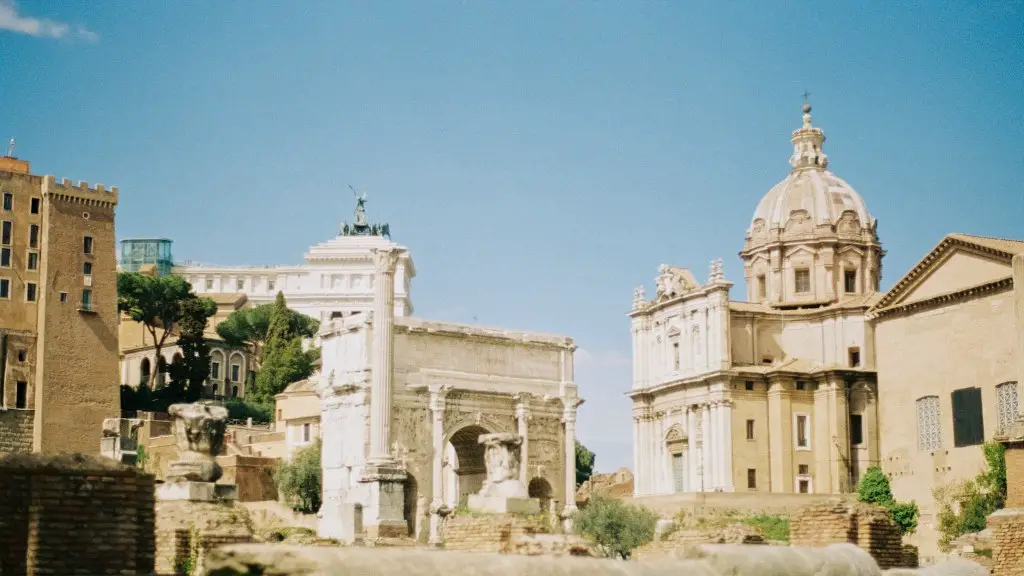Religion in Ancient Rome
Paganism was the dominant religion of ancient Rome. Paganism was a polytheistic religion, which means that the Romans believed in many gods and goddesses. The Romans had gods for everything, including love, war, and death, and they believed that these gods and goddesses held the power to help or hurt humans.
The Romans believed that each god and goddess had a specific job to do and worshipped them accordingly. For example, they worshipped Mars, the god of war, as a way of protecting their military. They also worshipped Janus, the god of beginnings, for guidance and luck in the beginning of something new. Additionally, the Romans held festivals that were religious in nature, such as the Saturnalia and the Lupercalia, which celebrated various gods and goddesses.
The Romans also believed that their religious practices helped to keep the gods and goddesses content, allowing them to continue to offer protection and favors. As such, the Romans sought to make sure that the gods and goddesses did not go without. To do this, they offered sacrifices, such as animals, sometimes precious jewels and other things, to the gods and goddesses as a way of keeping them pleased.
This was very important, as the Romans believed that the gods and goddesses could help them have a successful, prosperous life. They also believed that if the gods and goddesses were not appeased, they could cause great harm to them through natural disasters and other forms of bad luck.
Paganism was also reflected in the architecture and art of the ancient Roman world. Buildings, such as the Pantheon and Colosseum, featured gods and goddesses, while paintings and sculptures featured images of the gods and goddesses. This art was meant to invoke the gods and goddesses in order to receive their favor.
Overall, paganism was an integral part of life in ancient Rome. The Romans believed that the gods and goddesses had the power to influence their lives, and sought to appease them in order to have good luck and fortune.
Practices of Paganism
Paganism in ancient Rome was a polytheistic faith, not just a set of religious practices. This means that the Romans believed in many gods and goddesses, each with their own duties and obligations to the people of Rome.
The Romans practiced many religious rites and rituals, such as sacrifices and offerings, in order to keep the gods and goddesses content and to receive their favor. These sacrifices often included animals, which were then offered up to the gods and goddesses. They also offered precious objects and jewelry, as well as other non-material offerings, in order to keep the gods and goddesses pleased.
Additionally, the Romans held various festivals in order to honor the gods and goddesses, such as the Saturnalia and the Lupercalia. During these festivals, Romans dressed up in special costumes, danced, and performed rituals in honor of their gods and goddesses. Doing so was seen as a way of inviting the gods and goddesses to provide their favor and protection.
The Romans also believed that the gods and goddesses could influence their lives in a positive or negative way. This was why they held festivals and offered sacrifices—they wanted to keep the gods and goddesses on their side, so that they could have good luck in both their personal and public lives.
By keeping the gods and goddesses pleased with offerings, the Romans were able to receive their favor, thus helping them to maintain a prosperous and successful life.
Regional Practices of Paganism
Paganism in ancient Rome differed from region to region. While there were some commonalities among the different regions, each region had its own unique beliefs and rituals.
For instance, in Rome proper, it was customary for the people to honor their gods and goddesses through various religious festivals and sacrifices. However, in other regions, such as Amantia and Umbria, people worshiped different gods and goddesses and practiced different religious festivals.
The gods and goddesses that were worshiped in the different regions also differed. While the Romans in Rome proper worshiped the gods and goddesses of the Roman pantheon, the people in Amantia and Umbria worshiped local gods and goddesses. These gods and goddesses were believed to have powers that were specifically related to their home regions.
Additionally, the form of worship in different regions also varied. While some regions focused on religious ceremonies, others relied more on offerings and sacrifices. The types of offerings and sacrifices also differed, as some regions offered only animals and other regions offered gifts and jewelry.
Overall, the practice of paganism in ancient Rome varied from region to region. Each region had its own gods and goddesses and religious practices that were specific to that region.
Influence of Paganism in Ancient Rome
Paganism was a major influence on ancient Roman life and culture. The beliefs and practices of paganism were integral to the way in which the Romans lived their lives, from the way in which they built and decorated their homes, to the way in which they celebrated their festivals and holidays.
For example, pagan beliefs were reflected in the architecture and art of ancient Rome. Many of the buildings, such as the Pantheon, featured gods and goddesses, while paintings and sculptures featured images of the gods and goddesses. This art was meant to invoke the gods and goddesses in order to receive their favor.
Additionally, pagan practices influenced the way in which the Romans celebrated their festivals and holidays. As mentioned before, they held festivals in order to honor the gods and goddesses, and offered sacrifices as a way of appeasing them.
These religious practices were also believed to have a direct influence on the life of the Roman people. It was thought that by honoring the gods and goddesses in this way, the Romans could receive their favor, thus helping them to maintain a prosperous and successful life.
Decline of Paganism in Ancient Rome
Despite the importance of paganism in ancient Roman culture, the religion eventually began to decline. This was due in part to the rising popularity of Christianity, which began to spread throughout the Roman Empire in the first century AD.
As Christianity began to spread, the Romans began to see Christianity as a more appealing religion than paganism. Christianity promised eternal life, while paganism offered only temporary respite from hardship and suffering. Additionally, Christianity promised a better afterlife for those who believed in it, which was a major draw for converts.
Furthermore, Christianity was seen as a more unified religion, while paganism was incredibly diverse. This also made Christianity more appealing, as it was easier to follow and had more consistent rules. As such, many pagans began to turn to Christianity instead.
Overall, the decline of paganism in ancient Rome was due to the growing popularity of Christianity. Its more unified structure and promise of eternal life was much more appealing to those seeking a religion to follow.
Legacy of Paganism in Ancient Rome
While paganism eventually declined in ancient Rome, it left a lasting impression on Roman society and culture. Even today, many aspects of ancient Roman culture, such as art and architecture, reflect pagan beliefs and practices.
For example, many of the iconic buildings of ancient Rome, such as the Pantheon and the Colosseum, feature symbols and imagery of gods and goddesses. Additionally, many of the paintings and sculptures of ancient Rome feature images of the gods and goddesses. This artwork was meant to invoke the gods and goddesses in order to receive their favor.
Additionally, the Roman festivals, such as the Saturnalia and the Lupercalia, are still celebrated in modern-day Italy. These festivals are a reflection of the religious practices of the ancient Romans and pay homage to the gods and goddesses that were once worshipped.
Overall, paganism has left a lasting legacy in ancient Rome. Even today, many aspects of Roman culture and society still reflect the beliefs and practices of paganism.

